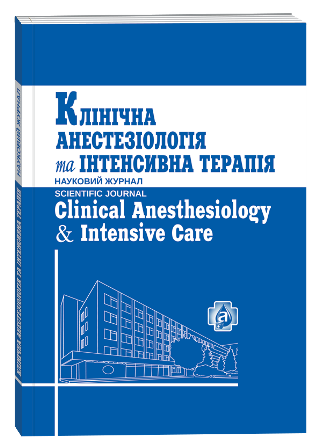CHANGES IN THE HEMOSTATIC SYSTEM IN CHILDREN WITH SEPSIS AND SEVERE SEPSIS
Keywords:
children, hemostasis, cytokines, sepsis, severe sepsisAbstract
This article describes the dynamics of the hemostatic system and the levels of proinflammatory and antiinflammatory cytokines in children with sepsis. We examined 33 children aged 3 to 11 years with sepsis. The patients were divided into two groups: the first one included children with sepsis, that during the first three days had a positive clinical and paraclinical dynamics of the state. The second one included patients who developed severe sepsis within the next three days. To investigate the hemostatic profile we determined: prothrombin index, thrombin index, activated partial thromboplastin time, international normalized ratio, soluble fibrin-monomer complexes, antithrombin III, levels of D-dimer’s, time of XIIadependent fibrinolysis, platelet count. The levels of TNF-α, IL-6, IL-2 was determined by ELISA. The dynamics of hemostatic parameters, cytokine levels and the level of organ dysfunction on a scale P-MODS analyzed at 1 and 3 days of treatment. We studied the relationship between indicators of hemostasis and cytokine levels, using correlation analysis. Patients of the first group observed a significant decrease in time ХIIa-dependent fibrinolysis and a decrease in D-dimers’ level in the third day of treatment with simultaneous decrease in the level of multiple organ dysfunction on a scale P-MODS. The patients of the second group on the third day of treatment decreased the level of thrombin index, total fibrinogen, platelet count, increased levels of soluble fibrin-monomer complexes that can be described as a stage hypercoagulable of disseminated intravascular coagulation syndrome with a tendency to hypocoagulation. Increase of level TNF-α in patients with sepsis is a negative prognostic sign and is accompanied by the increase of the level of multiple organ dysfunction syndrome and depletion haemostatic potential.
References
Кречетова А. В. Система свертывания крови при сепсисе / А. В. Кречетова, Г. М. Галстян, С. А. Васильев // Гематология и трансфузиология. – 2010. – № 5. – С. 20–34.
Consecutive thrombelastography clot strength profiles in patients with severe sepsis and their association with 28-day mortality: A prospective study / Sisse R. Ostrowski, Nis A. Windelоv, Michael Ibsen [et al.] // Journal of Critical Care. – 2013. – Vol. 28, N 3. – Р. 317.e1–317.e11.
Iba Т. The anticoagulant therapy for sepsis-associated disseminated intravascular coagulation / T. Iba, I. Nagaoka, M. Boulat // Thrombosis Research. – 2013. – Vol. 131, N 5. – Р. 383–389.
Levi M. Disseminated intravascular coagulation / M. Levi, H. ten Cate // N. Engl. J. Med. – 1999. – Vol. 341 (8). – P. 586–592.
Sepsis, thrombosis and organ dysfunction / N. Semeraro, C. T. Ammollo, F. Semeraro [et al.] // Thrombosis Research. – 2012. – Vol. 129, N 3. – Р. 290–295.
Surviving Sepsis Campaign: International Guidelines for Management of Severe Sepsis and Septic Shock: 2012 / R. Phillip Dellinger, Mitchell M. Levy, Andrew Rhodes [et al.] // Critical Care Medicine. – 2013. – Vol. 41, N 2. – Р. 580–637.
Tumor Necrosis Factor gene polymorphism results in high TNF level in sepsis and septic shock / Nikhil Kothari, Jaishri Bogra, Haider Abbas [et al.] // Cytokine. – 2013. – Vol. 61, N 2. – Р. 676–681.







